#the uncut revolutionary
Text
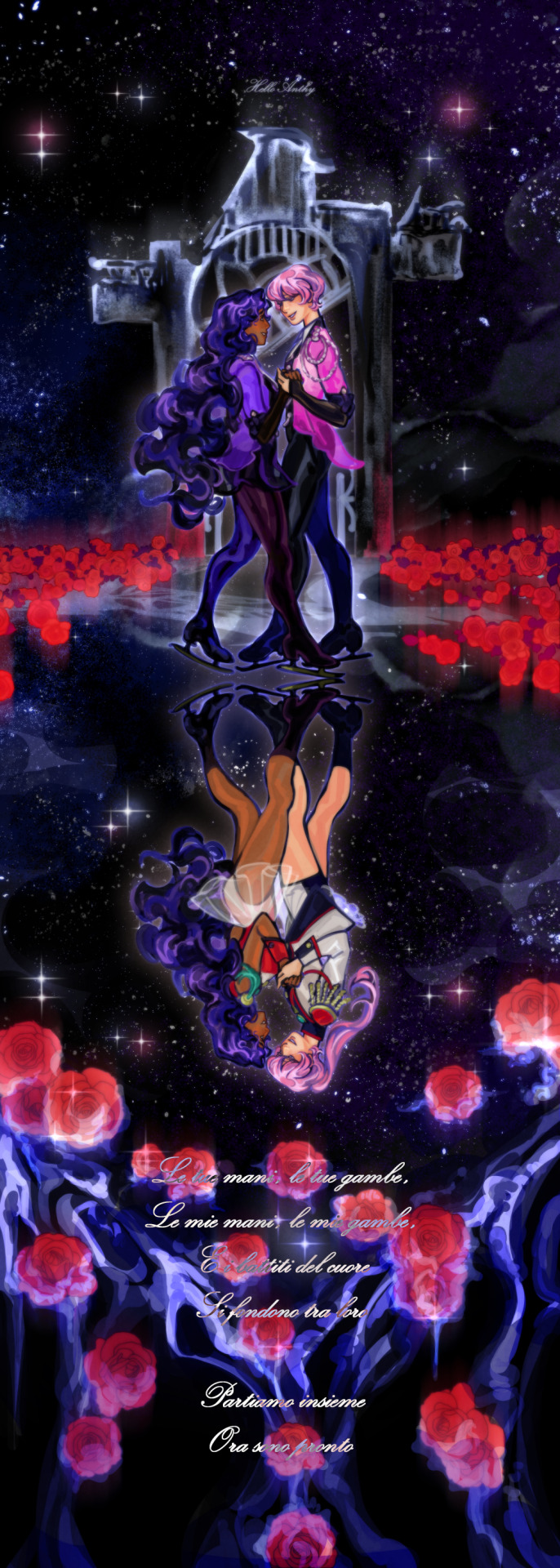
26.04.2024 ❄️ today's anthy!
Someday, Together ✨ (Stay Close To Me)
#hello anthy!#see you next level!#anthy himemiya#utena tenjou#utenanthy#revolutionary girl utena#少女革命ウテナ#4.24#2024#💖#📺#📽️#✨#edit: it turned out looking fine uncut ?!?! so i just replaced it with the single image augh
171 notes
·
View notes
Note
So I've asked you this in private, but I thought the rest of your followers should see this as your thoughts are quite entertaining.

What is your opinion on the idea of stuff like this being the only acceptable method of pornography?
*cracks knuckles* Let's get the easiest part out of the way first.
Saying Something Is "Female-Friendly" Is Just Marketing
I'm sorry (not really) to be the one to state the obvious, but at best labeling any kind of pornography as "female friendly" means "most of the people that enjoy this are women" - which is very different from saying "ALL women are into this" or "No guys are ever into this." It's the good old "this cartoon is for boys, that one is for girls."
It's not a radical statement, it's not revolutionary, and it is at best a morally neutral mention of a random statistic that is being used to find the best demography to advertise to and at worst just pointlessly trying to force people into boxes with that they are/are not allowed to enjoy based on their gender.
Don't believe me? Well, too bad because this image you're seeing is literally part of a facebook ad for a porn site. The name of the site and of the artist they were working with can be seen at the top in the uncut version. Like I said, it doesn't matter how "radical" these claims of "this product is made for/by X minority group" pretend to be, at the end of the day it's just marketing.
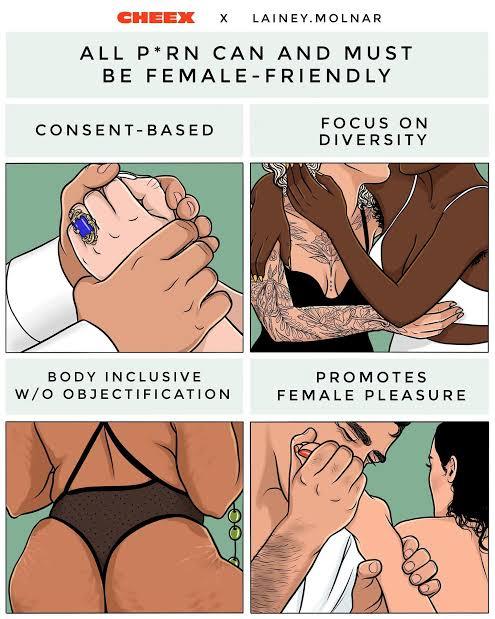
"Oh, but people obviously support the message it's sending anyway!" True... but that message is at best filled with poor word choices, and full on terrible at worst.
Consent - Important In Real Life, Meaningless In Fantasy
In the context of this being an ad for a porno site, I think it's safe to say "Consent-based" is just a way of assuring viewers that every actress was fully consenting to every sexual act and was not pressured into anything in any way, which is the bare minimum.
HOWEVER, I've seen plenty of people misunderstand or flat out lie about the "consent-based porn" term means. Like I explained, it is meant to be about the ACTORS consenting - but their "characters" don't need to consent to anything because they are not real. A hardcore CNC fantasy with the actress pretending she doesn't want the sex/is not enjoying it while her co-star pretends to force themselves on her is STILL consent-based if the actress playing the victim role can stop the scene for literally any reason and even walk out completely if that's what she wants.
Unfortunatelly, because kink-shaming is still very much a thing, people act like that is crossing a line and totally counts as legitimate assault - even in videos that the actors before AND after the scene mention how excited they are, how great it was, openly discuss their kinks, etc.
Nobody needs to watch something so extreme if they don't want to, but I have a serious problem with people saying stuff like that shouldn't ever happen. If the people involved in the role-play are doing it WILLINGLY and can back down at any moment, then it isn't in anyway immoral.
Sexual Attraction Is NOT The Same As Respect/Acceptance
Once again, I'm sorry (not really) to be the one who has to tell you guys this, but "representation" in porn is meaningless because:
1 - It doesn't matter how many porn videos there are of any minority group - each individual person picking something to watch will only click on the ones that show people with the body-types and genders they are attracted to, doing stuff they personally find appealing.
2 - "This kind of porn is popular" does not in anyway translate to "this is what society deems morally acceptable". A ton of homophobes LOVE lesbian porn. My country, Brazil, has always had porn with trans people and crossdressers as one of THE most popular trends - yet we are also the country that commits hate crimes against them the most, even when compared to places where being trans or crossdressing is literally a crime that earns you an authomatic death sentence. Incest porn has been obscenely popular everywhere for decades yet most people STILL find the thought of real-life incest absoutely repulsive.
3 - "I am not usually/ever attracted to people of group X" doesn't authomatically mean "I HATE people of group X." Just cause I like red-heads and brunettes, doesn't mean I'll be commiting hate crimes against blondes. If that was how things worked, sex-repulsed asexuals would hate literally all of humanity.
Wanting porn to be inclusive is utterly pointless because sexual attraction is 100% morally neutral. Which brings us to...
What Even Counts As "Objectification"?
Once again, if by "Don't objectify people" we are talking about how "Just because you hired this person to star in a porno, it doesn't mean you can just ignore their consent, comfort and safety for the sake of your fetish" then yeah, that's the bare minimum.
However, if you're saying "don't objectify people" as a way to say "Don't make the video too graphic/obscene/kinky" then we absolutely have a problem here because, my guy, it's porn. It is all about letting us see hot people looking slutty and fucking in great, explict detail.
"Oh, but these sexual acts are humiliating and gross!" To you, maybe. But not to the actors that are very willing to do it. I've had some of my fetishes be called both deeply disturbing and gross AND the most vanilla shit ever. That kind of stuff is 100% subjective, and the only people who can say "I felt disrespected/unsafe/abused" are the actors themselves. Once again, if THEY consented, there's nothing wrong with it regardless of it appealing to you or not.
"Oh, but we'd be wasting an opportunity to educate people/give X group more representation"
If I ever click on a porno and there's a two minute intro with the actors, both belonging to some minority group, talking about how one of them is also historian and the other is a astronomer, I will STILL only care about seeing them fuck even though I love both history and astronomy - not because I don't think they can't possibly know what they're talking about since they are sex workers or because of some kind of bigotry, but because, surprise surprise, I only check out porn sites for the porn. That's what EVERYONE does.
Hell, bad porn can be used to educate people. 50 Shades is awful and a ton of ignorant people think it is 100% accurate to how BDSM actually works. However, this has led to entire groups of people who are actually kinky to discuss REAL BDSM with vanilla people and educate them on how it can be a great thing. And, of course, there's people that enjoy those shitty novels/movies but KNOW they are not accurate representiation of BDSM because they are aware that PORN IS JUST FANTASY, NOT A GUIDE TO HOW SEX SHOULD WORK!
"But it's so shallow to focus only on these people's looks and know literally nothing else about them!"
Yes, and? Being "shallow" isn't always bad, and feeling attracted to someone solely for their looks is not a crime.
Don't get me wrong, I'm a goddamn fanfic writer and I was once the classic "teenager that totally thinks she'd have a chance with that famous rockstar that is old enough to be her dad", I KNOW that the thought of a real connection (emotional, intelectual, etc) CAN be hot - but there's nothing wrong with "These two people whose names I don't even know look hot, I wanna see them fuck, then I'll go take a nap and never think of them again." These porn stars are not crying themselves to sleep because people whose faces they've never even seen don't know anything about them other than how they look without clothes on.
"Female" Pleasure - Yet ANOTHER Hollow Marketing Term!
Seriously, that last one REALLY irritated me because it's one of those things that tries to sound progressive, but are meaningless at best and downright sexist at worst, because it implies:
1 - There must be a strict separation between "female" pleasure and "male" pleasure. A sexual act cannot possibly be enjoyable for both the guy and the girl, and gender prevents men and women from EVER being into the same thing (as a woman that finds more porn that fits my taste in "male-centered" sites than in most "porn for women" sites, this one gets on my nerves).
2 - Pleasuring one's partner cannot possibly be enjoyable - so, say, a girl cannot possibly enjoying giving her boyfriend head, and vice versa.
3 - Sex is a competition and women NEED to win because "female" pleasure is apparently more moral than "male" pleasure (hence the "ALL porn can and should be 'female' friendly")
4 - ALL women are turned on/turned off by the exact same sexual acts, and the level of pleasure they get is always exactly the same. Preferences are not individual and never change over time. (Seriously, a woman directs a sex scene between two actresses, the editor is a woman, and all the viewers are women - which one will speak for her entire gender and decide what "female" pleasure looks like? You see how silly this sounds?)
Conclusion
Sex and sexuality can never be over-simplified like that, and fantasies are just harmless fun.
149 notes
·
View notes
Text
KATHLEEN HANNA ANNOUNCES MEMOIR, REBEL GIRL: MY LIFE AS A FEMINIST PUNK
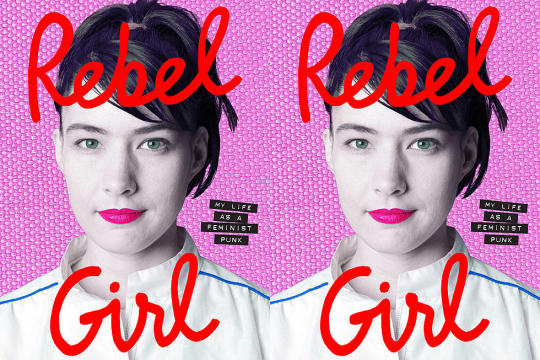
7/13/23: Kathleen Hanna has announced that she’s releasing a memoir in May of next year: Rebel Girl: My Life as a Feminist Punk is out Tuesday, May 14, 2024, via Ecco (a HarperCollins imprint). The book will follow Hanna’s story from childhood to her college years in Olympia, Washington.
Kathleen Hanna's rallying cry to feminists echoed far and wide through the punk scene of the 90s and beyond. Her band, Bikini Kill, embodies this iconic time, and today her personal yet feminist lyrics on anthems like "Rebel Girl" and "Double Dare Ya" are more powerful than ever. But where did this transformative voice come from?
In Rebel Girl, Hanna's raw and insightful new memoir, she takes us from her tumultuous childhood home to her formative college years in Olympia, Washington, and on to her first years on tour, fighting hard for gigs and for her band. As Hanna makes clear, being in a "girl band," especially a punk girl band, in those years was not a simple or safe prospect. Male violence and antagonism threatened at every turn, and surviving as a singer who was a lightening rod for controversy took limitless amounts of determination.
But the relationships she developed during those years buoyed her--including with her bandmates, Tobi Vail, Kathi Wilcox, and Johanna Fateman; her friendships with Kurt Cobain and Ian MacKaye; and her introduction to Joan Jett-- were all a testament to how the punk world could nurture and care for its own. Hanna opens up about falling in love with Ad-Rock of the Beastie Boys and her debilitating battle with Lyme disease, and she brings us behind the scenes of her musical growth in her bands, Le Tigre and The Julie Ruin. She also writes candidly about the Riot Grrrl movement, documenting with love its grassroots origins but critiquing its later exclusivity.
In an uncut voice all her own, Hanna reveals the hardest times along with the most joyful--and how it continues to fuel her revolutionary art and music.
you can pre-order Rebel Girl now though bookshop.org!
148 notes
·
View notes
Text
Pikmin-ifiable enemy adjectives stolen from Bots
Will continue updating via reblogs/edits going forward forward. Feel free to use if inspired!
Burgeoning
Difficult
Uncut (? May it could be a worm enemy that splits in two or something)
Palletable (Had a thought for this one while rewatching chuggaconroy's Pikmin 3 lets play: Like, A Pineapple that gained sentience or smth. When defeated, its body is a collectible b/c its a sentient fruit)
Overhanging
Frat (Not an adjective, but I feel like it could be funny to have a "Rat king" kind of monster be called a 'Conjoined Frattlewhump' or something, lol)
Slick
Adament
Conservative
Offbeat
Leaking
Bankrupt (Something like a Breadbug that can't collect things, maybe? So it just keeps dragging things around until it's taken care of)
Blasted/Blasting (Same as uncut- Could be an enemy with two forms. Like, imagine an enemy that violently explodes as an attack, which then leaves it vulnerable!)
Revolutionary
Fragmented
Incremental
Second
Gouging (Mm, the immediate is p violent... Maybe its talking about fruit or smth?)
Robust
Coastal
8 notes
·
View notes
Text
What Do We Canonically Know About Christophe aka “The Mole”?
“What do you think this is, kid? [...] Huh? This is real life with consequences you take to the grave!”
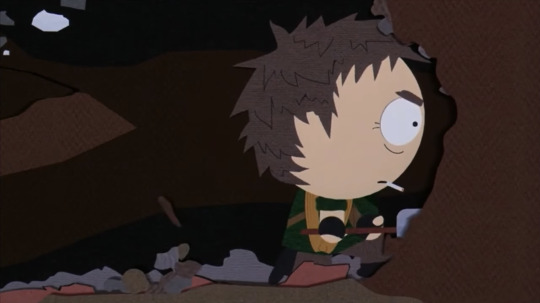
For a character with only around 5 minutes of screen time in the 1999 film South Park: Bigger, Longer, and Uncut, Christophe (aka The Mole or Ze Mole) left quite the impact with the SP fandom. Much of this is due to the fact that, despite how little we see of him, he has such a complex and interesting personality. Is it really possible to obtain such depth of character in so little time? Today, I’d like to answer that question by exploring everything we canonically know about Christophe, as well as some personal speculation based on the canon.
To start, I’ll state that what I am taking to be canon is everything that happened in the movie, along with South Park Studios wiki page about him (as close to an official wiki as I can get).
The first time we hear about Christophe, he isn’t even present.

After Stan and the others volunteer to execute Gregory’s rescue mission for Terrance and Phillip (T&P), Gregory insists that they need help from someone who has “done this sort of thing before”. He hands them a card that has the address of someone who Gregory refers to as “The Mole” and claims he is “an expert in covert operations” and “a mercenary for hire”. Though Gregory calls him a mercenary, no money seems to actually exchange hands when the boys recruit him, so it’s possible that Gregory uses the term “mercenary” loosely. However, we know at the very least that Christophe is experienced when it comes to mercenary-esque work.

Additionally, we know that Gregory and Christophe know one another. According to Gregory’s official wiki, in one of the movie script drafts, Christophe asks Gregory if they are going to “free more Canadian prisoners”, implying that the two of them have been doing revolutionary work together already. While this concept doesn’t make it into the actual movie, I feel the fact that the official wiki page for Gregory references it means their implied partnership is something not to be overlooked.
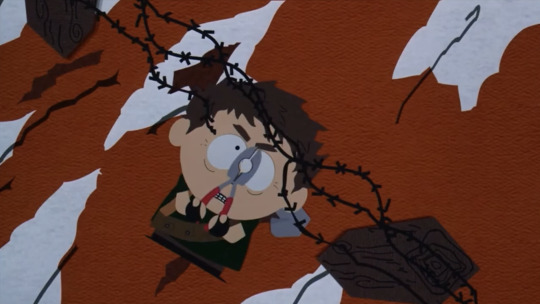
Similarly to Gregory, Christophe is very familiar with the layout of the army base where T&P are being held and the exact window of opportunity during the USO show when they can be freed. He also knew a spot to dig into the base where they won’t be immediately spotted, where to go to lay low once they’re inside, where the electrical box that shuts off the alarms are, and that there are alarms and that he will be attacked by guard dogs if they sound. Christophe even brought along wire cutters to deal with the barbed wire when sneaking into the base. This level of detailed knowledge and preparation is likely something he could only know from having scouted for the rescue mission ahead of time. Since Gregory conceptualized and presented the rescue mission during the La Resistance meeting, as well as initially volunteered to go, it’s possible that both he and Christophe planned it ahead of time.

While on the subject of Christophe and his mercenary/revolutionary work, I would be remiss to not focus a bit on his incredible digging prowess. In addition to literally being named “The Mole” (an animal known for digging), Christophe utilizes tunneling twice during the mission. The first time is to break into the army encampment and the second time is to sneak onto the stage to rescue T&P. Supposedly, he’s able to do this in the span of less than 20 minutes, judging by the time on his watch at the start of the rescue mission (9:40) and the fact that Stan doesn’t seem late to the rendezvous later in the movie, which was set to happen at 10:00. This implies that Christophe possesses good, inhumanely fast digging skills, especially since he claims that the USO stage has bedrock and he is able to get through it.
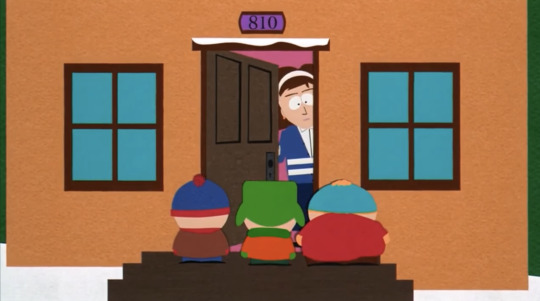
Going back to earlier, before we actually see Christophe, we learn more about him. First, it can be assumed that he lives in the town of South Park (house number 810), as Stan and the others can easily walk to his house. I know they walked because they’re meant to be grounded at the moment, so they can’t ask for a ride anywhere. Second, Christophe’s mother answers the door, which means we know that Christophe has (at least) a mother. Speaking of his mother, the two of them have an intriguing relationship that is never fully stated, but a lot can be inferred from what is implied.
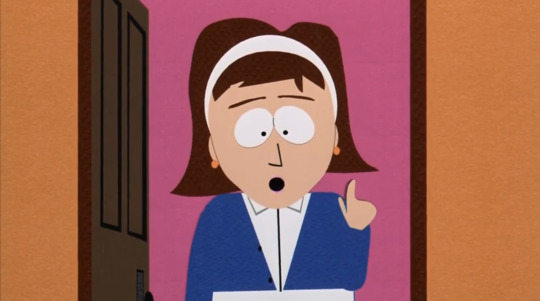
For starters, it’s not until she calls him to the door that we learn his name is “Christophe”, as before (and the rest of the movie) he was only ever referred to by his code name “The Mole/Ze Mole/Mole”. However, when the others use that name, Christophe’s mother knows who they’re talking about. This means she’s aware of what he does, but it’s possible she doesn’t quite know how real it is considering she tells the boys at the door that “Ze Mole[…] can’t come out and play”. Breaking into a US army camp to free political prisoners seems a bit intense for the word “play” to me. Also, the reason I use “Ze Mole” here is because she has a thick French accent. This begs the question of whether Christophe got his accent from growing up in France or simply developed an accent from socializing mostly with his mother. Sadly, I don’t have an answer.

Christophe’s mothers says the reason Christophe can’t “play” is because he’s grounded for saying “very naughty things about God”. This specification that she is upset with him because he said naughty things about God rather than naughty things generally implies that she is 1) Christian and 2) cares a lot about respect towards God. This idea is further supported as she later gets upset (off screen) when she overhears Christophe starting to talk about God as an oppressive force later on. Her fixation on blasphemy (and Christophe’s constant usage of it) hints at the idea that she is perhaps raising Christophe in a very religious environment. Considering the fact that his name relates to being a devout Christian, this idea is very likely.
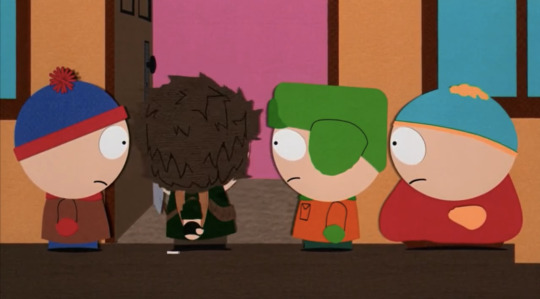
Despite how Christophe rebels by vocalizing his hate towards God, he appears obedient to his mother at least on a surface level. He comes to the door when she decides to let Stan and the others talk to him as soon as she calls him. He also immediately stops talking when she yells at him for badmouthing God again, snuffing out his cigarette and going back inside right away. (“What?! Christophe, get in here!” / “Coming, mother!”). He even initially turns down the opportunity to rescue T&P just because he’s grounded. Still, Christophe does actively disobey her by sneaking out later and continuing to blaspheme when not in her presence. It’s possible that he’s scared of her, which is why he is quick to heed her but refuses to actually change his ways.

When we first see Christophe, he doesn’t appear very reactive to the strangers on his doorstep until Stan starts talking about their rescue plans. He immediately grabs Stan and shushes him, demanding “Who are you? Who sent you?” Even though he’s just a kid, Christophe seems extremely paranoid, which means his mercenary work might be legitimately dangerous. There’s a chance that he’s a wanted criminal. However, he lets go of Stan once Kyle mentions “that Gregory kid” sent them, implying that Christophe trusts Gregory and his judgement despite his paranoia.

The reading of Christophe’s next line is a bit difficult to parse. Depending on the emphasis, he is either shocked that Stan, Kyle, and Cartman are the ones going on the rescue mission or he’s shocked that the plan in general is to rescue T&P during the USO show. If it’s the former, then he is rather quick to judge. Sure, Stan started explaining a covert plan with sensitive information at a normal speaking volume, but Christophe barely knows him or the others. How could he know if they’re incompetent or not? However, if it’s the latter, then it implies that a rescue mission of this intensity is too much, even for Christophe. This would shed some light on what level of mercenary work he’s taken on in the past.
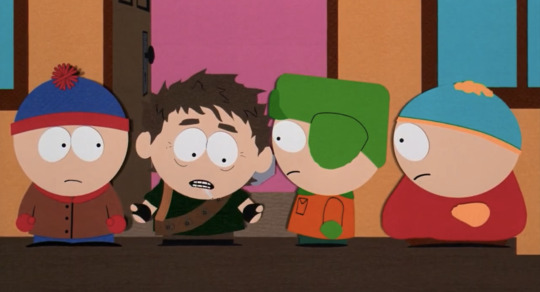
Either way, Christophe initially refuses only because he’s grounded. If he really is an expert mercenary (and the narrative paints him as such), then it’s curious that something as simple as that is what stops him from helping in revolutionary work. He even references grounding as a legitimate threat twice more in the film. This could connect back to the idea that Christophe fears his mother, to the point where he’s less scared about the difficulty of the mission and more worried about upsetting his mother. He only relents once he hears the other boys are meant to be grounded too, perhaps admiring their bravery for rebelling against their mothers and wanting to join in solidarity. When asked, Christophe reveals that the reason he was grounded was “because God hates [him]... He has made [his] life miserable so [Christophe] calls Him a cocksucking asshole”.
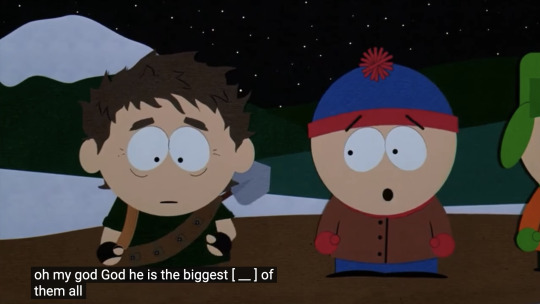
With that said, let’s talk about Christophe’s repeated displays of misotheism, or hatred of God. We already touched on his mother’s attitude towards God and her potential relationship with Christophe, which could contribute to why he feels the way he does. Beyond based speculation, though, Christophe voices his hate towards God a lot. Aside from his grounding, he goes out of his way to bad mouth God, calling Him “the biggest bitch of them all” and equating him to the US military, who he seems to hate (referring to them as “military bitches”), just because Kyle says “Oh my god” in response to something.
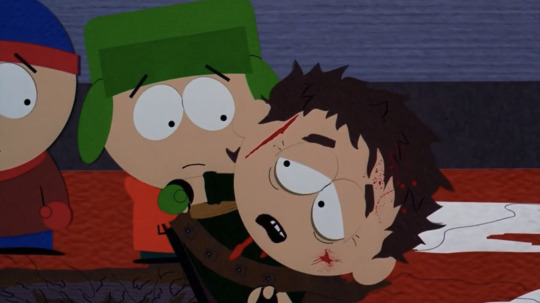
Then, of course, Christophe uses some of his dying breath to bemoan God and point out the hypocrisy of the idea that He is benevolent and merciful (“Where is your God when you need him, huh? Where is your beautiful, merciful faggot now?”). The fact that he casts doubt on the idea of God being infallible and suggests that He is, in fact, selective in who He helps, really continues to potentially paint Christophe’s mother in a bad light. Or, at least, whatever experience Christophe has potentially had with other religious (specifically Christian) people.
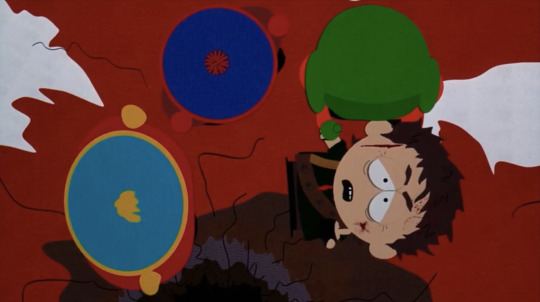
The oddest thing, in my opinion, is that Christophe still believes he is headed to Heaven when he dies. In fact, he has an almost resigned excitement about it, challenging God and threatening Him (“Here I come, you fucking rat!”) right before his death. Despite Christophe’s hatred of God, he also clearly still believes in Him and sees himself as worthy of Heaven. His feelings towards religion may seem very clear at a cursory glance, but there’s a lot of complicated emotions involved. This may connect back to his mother, or perhaps even to Gregory, who does seem to believe in God as a force of good.

Christophe has personality traits outside of blasphemy though– the most prominent being his sense of humor! The watch he brings on the mission is labeled “Third Act: The Ticking Clock”. This is a reference to the fact that many movies will introduce a ticking clock (or just a deadline of any kind) in their third act in order to draw the audience back in. Outside of the obvious meta joke for the audience, I want to believe that Christophe finds humor in giving himself a “ticking clock” to make his missions more exciting. Considering how obsessive he is about the timing of everything (becoming upset when the boys don’t have watches to synchronize with him), I don’t think he’d get a watch with that label for no reason.

Another humorous thing he does is using a View-Master toy as binoculars in order to observe T&P. When Kyle asks if Christophe can see T&P, he claims that he can, yet the audience is shown that what he’s actually seeing is a bunch of safari animals. He seems to really like these types of animals, especially considering his distress signal is the sound of a dying giraffe. Going back, the fact that he uses this toy as if it’s a real pair of binoculars, lies about his observations while also being incredible accurate, and then gets the others to follow him by saying “Come on beetches” gives the impression that Christophe enjoys being funny, even if he is the only one getting the joke.

The other joke he makes in the movie also falls flat, though Christophe doesn’t seem to mind. While checking that the others brought everything he asked them to bring for the mission, he asks if they brought the “buttfor”. When Kyle responds with “What’s a buttfor?” Christophe replies “For pooping, silly” and takes a long drag of his cigarette. Despite the sensitive, timed nature of the mission, he takes the opportunity to crack a joke, a toilet humor based one at that. He has a very dry wit about him. Even if his expression remains deadpan as he tells it, the fact that he makes the joke throws doubt on the idea that his personality is one of only angst and brooding.
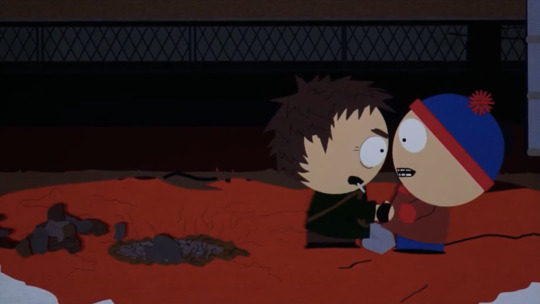
While he may be enough of a kid to use a toy like legit spy gear or crack toilet jokes, Christophe comes across as much more grounded and intense than the other boys. In addition to all his darker thoughts on God, he treats the mission with a grave seriousness. He chastises Stan for being focused on Wendy and finding the clitoris instead of what they’re doing (which also implies that Christophe knows what the clitoris is while the other boys don’t). He yells at Stan (and the others by proxy) again after learning they don’t have watches, reminding them all that “this is real life with consequences you take to ze grave”. He appears to take great offense to Cartman’s lackadaisical attitude about shutting off the alarms too, which makes sense considering how Cartman forgetting to do so results in Christophe’s death.
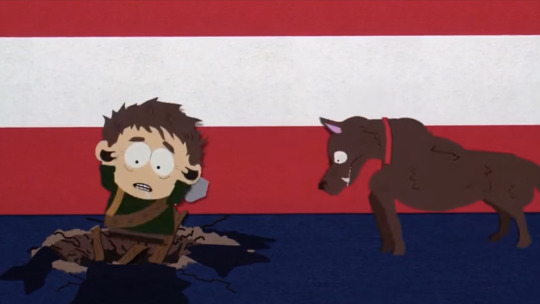
Death and injury are things Christophe seems quite familiar with. When telling Cartman he has to shut off the alarms or Christophe will be attacked by guard dogs, he is very insistent about his hatred of them (“You must shut off ze alarms! I fucking hate guard dogs!”). This gives the impression that he has experience dealing with guard dogs, specifically being attacked by them. Considering his implied history of mercenary work, this isn’t surprising. This is not the only known brush with death Christophe has had though. He reveals, rather unnecessarily, to Stan and Kyle that his mother attempted (and failed) to abort him (“Was my mother careful when she stabbed me in ze heart with a clothes hanger while I was still in ze womb?”). That particular interaction also shows that Christophe somewhat lacks emotional boundaries, or at least a basic understanding of social situations and dynamics.
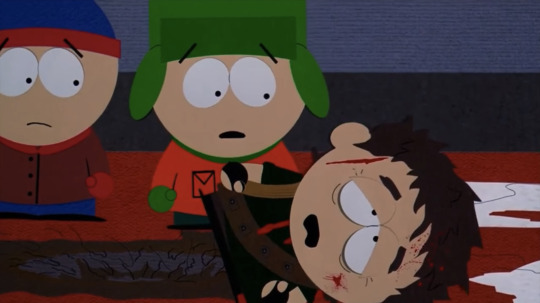
This familiarity with death could explain why Christophe takes his own death in stride. Aside from asking Kyle to hold him, which seems more out of necessity since he can no longer stand, Christophe tries to get the others to abandon him so they won’t also get hurt. He doesn’t even get angry when Cartman admits that it was his fault that the alarms went off, but it’s possible he just doesn’t have the energy to while dying. Christophe’s song, a short reprise to Gregory’s song La Resistance, is about how “although [he] dies, [their] freedom will be won”. Christophe, like Gregory, seemingly idolizes the concept of being a martyr and dying for a cause, specifically fighting for freedom. The notion comforts him, and he’s able to face his death nobly.

It should be said, however, that Christophe is not actually dead! At the end of the movie, Kenny wishes for everything to go back to how it was before, reviving everyone who died. Even if we don’t see Christophe again in the movie, leaving his fate uncertain, he does appear once in the actual show of South Park. In the episode Two Guys Naked in a Hot Tub (s3e08), Stan flips through many TV channels. For the briefest moment, Christophe is on the TV, seemingly a guest on a talk show of some kind. It’s unclear why he might be on one, but given the fact that the episode aired after the movie was released, this proves that Christophe is alive.

Now that we know all there is to canonically about Christophe, what can we say about him? First, he and Gregory not only know one another, it’s implied that they’ve worked together on past mercenary/revolutionary work. Christophe himself is an expert and experienced mercenary in all aspects (scouting, planning, and doing). He defaults to tunneling as his main method of operation, likely because he digs incredibly fast and efficiently. This tunneling is also probably why everyone calls him “The Mole”. Christophe and his mother have an interesting and seemingly strained relationship, stemming perhaps from his fear of her and/or her anger towards his disdain for God. This disdain for God permeates so much of Christophe’s character and he takes any opportunity to voice it.

In addition, he is hinted at having various near death experiences in the past, which results in him having a stern personality, becoming frustrated when others aren’t taking things as seriously as him. When he does die, however, he doesn’t fight it and takes comfort in being a martyr for a good cause. Despite this emotional baggage, he has a prevalent and dry sense of humor, as well as an apparent interest in animals. Lastly, Christophe is not actually dead and was actually resurrected via Kenny’s wish at the end of the movie.
#south park#christophe delorne#the mole#ze mole#south park meta#sp christophe#sp ze mole#sp the mole#MEN I'M INSANE ENOUGH ABOUT TO WRITE ~3k WORTH OF ANALYSIS ON FOR 5 MIN OF SCREEN TIME#talk to me about him whenever wherever please please he is my boy and i love him infinitely. need more christophe fans out there.#and if youre wondering where i got the last name delorne from. well. that's another pet project of mine you may ask about
131 notes
·
View notes
Text
The Weller Bourbon Legacy: A Toast to Wheated Whiskey Excellence
Introduction:
Nestled in the lore of American whiskey, Weller Bourbon stands as a pillar of quality and tradition in the heart of bourbon enthusiasts. With a history stretching back over a century, Weller's distinctive profile has captivated the palates of drinkers looking for something exceptionally smooth. In this post, we'll delve into the rich heritage of Weller Bourbon, explore its unique wheated formula, and understand why it continues to be a sought-after spirit in bars and liquor cabinets across the country.
The Heritage of Weller Bourbon:
The Weller brand was pioneered by William Larue Weller, a man whose name would become synonymous with top-tier bourbon. Weller had the innovative notion to replace the traditional rye component of bourbon with wheat, a decision that would set the course for a new whiskey style. The year was 1849, and the bourbon landscape was forever changed.
Weller's choice to use wheat instead of rye is not just a matter of grain but one of taste and refinement. Wheated bourbon typically yields a softer, smoother profile with less spice and more gentle, bread-like sweetness. This approach was revolutionary, influencing other prominent labels in the industry, including the prestigious Pappy Van Winkle line.
The Weller Bourbon Lineup:
Weller Bourbon's lineup is a testament to the diversity that can be achieved within the confines of a single grain change. Each variant offers a unique experience:
Weller Special Reserve: Known as the "Original Wheated Bourbon," it offers a softer flavor profile, perfect for those new to bourbon or who prefer a less aggressive whiskey.
Weller Antique 107: With a higher proof, this version caters to those looking for a bolder taste without sacrificing the inherent smoothness that wheated bourbon provides.
Weller 12 Year: Often compared to the elusive Van Winkle bourbons, this aged spirit is a testament to the complexity that time can bring to a well-crafted whiskey.
William Larue Weller: Released annually as part of the Buffalo Trace Antique Collection, this uncut and unfiltered bourbon is a powerhouse of flavor, often eclipsing many other high-end bourbons in blind tastings.
Weller Full Proof: Bottled at the same proof as when it enters the barrel, this offering is for those who want to experience bourbon in its purest form.
Weller Single Barrel: Each barrel is unique, offering a distinct profile, which makes each bottle a collector’s item for whiskey aficionados.
The Weller Cult Following:
In recent years, Weller Bourbons have developed a cult following, with enthusiasts eagerly awaiting each new release. The anticipation for limited editions like the William Larue Weller has led to a vibrant secondary market, with bottles sometimes selling for multiples of their retail price. This fervor is a testament to the quality and craftsmanship that the Weller brand has consistently delivered.
Weller Bourbon in Cocktails:
While excellent on its own, Weller Bourbon also shines in the cocktail world. Its wheated profile makes it a versatile player in classic concoctions. The smoothness of Weller Special Reserve makes it a sublime base for a Whiskey Sour or Old Fashioned, while the robust character of Weller Antique 107 can stand up to more complex mixers in a Manhattan or a Boulevardier.
The Future of Weller Bourbon:
As the demand for Weller Bourbon shows no sign of waning, the future looks bright for this iconic brand. Buffalo Trace Distillery, the custodian of the Weller legacy, continues to invest in the production and aging of Weller bourbons, ensuring that this cherished whiskey will grace glasses for generations to come.
Conclusion:
Weller Bourbon is more than just a whiskey; it's a piece of American history, a staple for collectors, and a testament to innovation in a category steeped in tradition. From its humble beginnings to its current status as a cult favorite, Weller has shown that with time, patience, and a little bit of wheat, whiskey can be elevated to an art form. So, the next time you raise a glass of Weller, know that you're savoring a sip of liquid legacy.
Whether you're a longtime aficionado or a curious newcomer, Weller Bourbon is a journey of flavor worth exploring. As the Weller saying goes, "We invite you to drink it in a wheated way." Cheers to that.
1 note
·
View note
Text
Update 📍🌍| Suggested Readings
“The Black Community is Fighting a Silent War…”
Dr. Constance Craig-Mason, MRFC® is a 9x bestselling author, an award-winning Insurance Broker, CEO of Concierge Financial Advisory and passionate International Speaker.
In her revolutionary third volume of the Money TALK$ series, she has an important message for the black community.
Today, this community is fighting a silent war… and if we don’t fight back, we’re gonna lose.

In celebration of her new book, carefully compiled with 24 of the most exceptional black voices in finance, Dr. Constance Craig-Mason is giving access to this groundbreaking new guide with special bonuses at www.monetalkschallenge.com
Best of all, in celebration of launch week, the eBook is only $4.99 (get it now, or you’ll miss out!)
P.S.
Grab your copy today for 50% off retail before the price doubles on Monday (October 23rd)!
www.moneytalkschallenge.com
Take charge of your financial future!
#baltimore#music#maryland#media#events#arts#amnglobal#monumentalmondays#photography#marketing#authors#black excellence#marylanders#blacktumblr#moneytalks#1ksavers
0 notes
Text
US Figure: From 10 million Jabbed, 770,000 Needed Medical Care — The Most Revolutionary Act
US Figure: From 10 million Jabbed, 770,000 Needed Medical Care — The Most Revolutionary Act
By Mark Sharman News Uncut Cracks everywhere in narrative – but MSM continues to bury its head THE wall of defiance and secrecy that protects the Covid jab narrative is crumbling so fast that one can see right through to the deceitful heart of this medical scandal. To quote Leonard Cohen: “There’s a crack […]
US Figure: From 10 million Jabbed, 770,000 Needed Medical Care — The Most…
youtube
View On WordPress
0 notes
Note
Roma
I'm thinking of ending things
Uncut gems
Birds of passage
Monos
Parasite
Thelma
When we leave
The conversation
Climax
Revolutionary road
You were never really here
oh, you really have the whole list.. Thank you <3
0 notes
Text
Somebody get Oscar Isaac's peepee filmed more, society needs more of his penis scenes
6 notes
·
View notes
Text


So she says, but we all know that leaving Ohtori Academy is the happy ending :P
This was fun! Maybe I’ll actually play the game for real after this, XD.
#to help her MOM take care of her sick DAD though#had to reinforce the normal order of things to the end didn't they#revolutionary girl utena#rgu#liveblogging#there's still a bit more with each of the characters at the end BTW but i'll leave that for those who still wanna play the game#and for some reason haven't blocked my 80 thousand uncut spoilers yet
7 notes
·
View notes
Text
“John Lennon's Primal Scream” article by Gavin Martin, Uncut Legends, 2005
In 1966 John Lennon had approached Godhead status for a generation when he sounded the call to "relax turn off your mind and float down stream" in 'Tomorrow Never Knows'. Four years later the drugs didn't work anymore, the Godhead a broken stick, Lennon had sunk into deep depression.
An interesting article discussing John undergoing Primal Therapy, with Arthur Janov providing commentary (albeit limited) about this period with John in 1970. Quite a bit of remarks/observations I don’t necessarily agree with in the article, however there are a few interesting and perhaps non-intentionally revealing details. Placing under a cut for anyone who would like to read the long excerpt!
When he hit rock bottom Lennon undertook a new form of psychotherapy, pioneered by the Californian based Doctor Arthur Janov. Primal Therapy was to be the great reckoning for Beatle John, the place where the cocksure, bravado filled, wisecracking rock n roll king came face to face with his inner turmoil.
All the rage and anguish that he'd carried throughout his adult life, and had sought to calm through self-medication was, the therapy taught him, rooted in the trauma of his childhood. A childhood where the distinguishing factors had been the loss of his mother (not, as he bitterly noted, once but twice), abandonment by his father and the emotional coldness of his guardian Aunt Mimi.
The wounds visited on the young boy remained barely healed scars in the man.
Although the intercession of the US Immigration Authorities was to cut short Lennon's treatment the therapy would have a lasting effect on both him and his work. The immediate result of "Primalling" was Plastic Ono Band, one of the greatest portraits of a soul stripped bare in rock history - the journeys undertaken in therapy turned into molten art.
But the effect of the treatment could also be heard in John's public utterances - and even in songs that would emerge years later.
Today 35 years on Doctor Arthur Janov is still practising the Primal Therapy that was a relatively new discipline in 1970. In his office in Venice Beach California Janov, now 81, is a calm and exacting figure, a long way from the "Rommel of the couch" character described by Albert Goldman.
[…]
Asked to describe in brief how Primal Therapy works Janov is reluctant, advising that I read the books. His website does however offer a brief outline. In childhood the brain sets up barriers to prevent trauma being felt in the consciousness. These barriers can result in a host of neurotic behaviour patterns and physical symptoms in later life. In Primal Therapy the barriers are broken down, the pain is felt, the connection made and the traumas resolved.
So, I ask him, is the pain nothing to be afraid of?
Janov laughs. "We're all afraid of pain - the point is that at 33 we can face the pain that we couldn't as a 3, 4, 5 or 6 year old. At that age you repress it but it comes back later on in all sorts of acting out and drug taking. But to get to that point (where you can face the pain) takes a lot of time."
With hindsight Janov compares the advent of Primal Therapy to many of innovations that took place in the 60s.
"The 60s were a revolution in fashion, music - and in psychotherapy too. There was something about the zeitgeist that allowed for revolutionary change and I think The Beatles were a big big part of it."
Whether as musical innovator, rabid drug user or keen patron of Apple court jester Magic Alex John Lennon, the King Beatle, certainly had a keen taste for the innovations age. Indeed his life in the latter stage of The Beatles existence seemed to mark him out as a prime candidate for Janov's treatment.
As The Beatles moved close to a bitter parting John Lennon's extremism grew. He'd always been the wildest, most unhinged member of the group and his newfound freedom, under the Yoko's avant-garde influence, meant that all the bounds were now loosened.
The exploration of his smacked-up and psychedelised self peaked as the decade ended. Lennon was, like his absent sea faring father, adrift on an ocean but unlike Merchant Navy man Freddie Lennon was largely alone on an inner voyage.
He risked losing his bearings completely.
Other survivors of the rock n roll years would find their own ports in the storm. Dylan's bike crash lead to a period of domesticity, Pete Townshend discovered Meher Baba, in time, Jimmy Page would cultivate an interest in the occult, and Keith Richards welcomed narcotic oblivion.
But Lennon always wanted something more. Although he had found the time the Beatles spent with the Mahareshi an ultimately dispiriting experience his spiritual quest continued to startle those close to him.
On one occasion he convened a meeting at Apple to tell his colleagues that he thought he was Jesus Christ. On another he suggested to Paul and Linda McCartney that they could all benefit from getting trepanned, an ancient surgical procedure involving the removal of a chunk of the skull, supposedly to release blood and produce a feeling of inner calm.
In the midst of this sex and drugs fuelled journey, Lennon was attempting to obliterate himself - and the pain of his background - with LSD. In one memorable image of the self-abasement Lennon offered his open mouth to be used as an ashtray to all comers at a London party. As he would later admit estrangement from his own dad in childhood made him prey to the influence of father figures. From 'Tomorrow Never Knows' onward he was deeply affected by the often-spurious directives of Timothy Leary. The West Coast Acid Guru's message to destroy the ego was undoubtedly full of psychological danger.
"Some stuff I can't tell you because it was inside the therapy," says Janov, "but if you think about the amount of drugs John took, could you imagine what that would do to a person? John had the kind of pain that would knock a patient off the floor it was so catastrophic. When he was in pain it was agony beyond description."
When the heroin that he and Yoko were using, as Lennon put it, "to ease the pain of all the shit we were going through", became an addiction he had tied himself to a chair for three days. The physical agonies were recounted in the monumental 'Cold Turkey, released in October 1969, several months before Janov's book had arrived at John and Yoko's Tittenhurst mansion.
[…]
By the early spring of 1970 Lennon may have kicked heroin but peace of mind was still a long way off. Tittenhurst, purchased in May 1969 for £145,000, was still undergoing refurbishment and its inhabitants, exhausted from their full on media assault of the previous year, were beginning to show the strain.
Lennon's depression had him bedridden when an enterprising person at Janov's publisher sent him a copy of Primal Scream. Perhaps word had got out that the onetime cultural dynamo was now a flat battery. The book's title immediately intrigued Lennon - raised on the frenzied rock n roll of Little Richard and Jerry Lee Lewis, Lennon had designed his own schoolboy newspaper called The Daily Howl, he'd married a woman famed for her screaming performance art pieces and had risen to global fame on a sea of screaming voices.
"I would never have gone into psychotherapy if there had not been the promise of this liberating scream," he later explained. "The Scream was just a catchy title for a book, though patients cry and scream that's not the whole goal of the therapy," says Janov.
"I had no idea the book was being sent to him, they sent it to John hoping for a review I think. But it was Yoko who called me - she said John can't get out of bed, he can't leave the house. I said well I have a clinic in LA and patients who I can't leave and so I hung up."
Yoko persisted, perhaps fearing that her partner was now a busted flush, his ability to function on any level gone. That, coupled with the determination of Janov's 10 and 12 year old kids to be taken to England, and the availability of staff to take over his LA practice, meant the Doctor was able to arrive in London with wife and family in late March.
Initial sessions took place in a part-finished recording room in Tittenhurst. The setting - a dark, silent, soundproofed, padded room - was perfect Primal territory. It seems significant that Lennon chose to begin the treatment in a recording studio, perhaps making his intentions clear - he wanted the therapy to kick-start his creativity.
"The symbolism of that never struck me until just now," smiles Janov "John was certainly a very good patient, he was curious and wanted to go back and deal with his feelings. Patients can go back and relive their birth, originally I thought that was not possible but it happens everyday in our clinic."
From Tittenhurst the sessions moved to Janov's temporary clinic in 20 Devonshire Place near Harley Street. Finally, after a month of intense treatment in the UK John and Yoko flew to Los Angeles to continue treatment at Janov's Primal Institute.
It is worth remembering that, Lennon entered therapy just as his split with Paul McCartney became final.
By spring 1970 the pair may have been rivals more than partners but it was with McCartney that Lennon had experienced the warmth and compassion in art that he had been denied growing up by the emotionally withholding Aunt Mimi. It was while he was attending the Devonshire clinic McCartney phoned to inform him of his forthcoming solo album. The announcement could hardly have been timed to have a more devastating effect. At first Lennon thought little of it but soon he felt humiliated, if not betrayed, when the story hit the front page that McCartney was quitting the Beatles.
Seething he snapped back with a terse "he didn't quit he was fired" line.
But perhaps the pair's future priorities were best illustrated by the news that, as John prepared to leave London and go further into the punishing rigours of Primal therapy in California, Paul had secured the film rights to cartoon character Rupert The Bear.
Several sources recount that part of Janov's therapy involved sending Lennon to confront people with whom he had problematic relationships. Albert Goldman describes a visit Lennon made to his ex wife Cynthia and son Julian in the course of the treatment, supposedly at Janov's bidding. But in her book John, Cynthia Lennon is clear that after her split with Lennon, she saw neither John nor Yoko until they came, together, to a dinner party she held in October 1970. This suggests that the episode recounted in Goldman's book and repeated elsewhere, where John arrives at his ex-wife's house alone and has his visit interrupted by a call from Tittenhurst staff saying that Yoko is threatening suicide, is pure fiction.
Janov is adamant that no such direction was or is part of Primal therapy.
"It's very undirected, people will do what they want to do, what we offer is their feelings back and that is a lot, the benefits come in increased health, blood pressure - it's scientifically measurable. We help people feel and they lead the lives they want to lead, it's their lives, not mine. We get to all the stuff that makes people take drugs and hide their pain."
The point is emphasised further on his website.
"A therapist who needs to control will control his patients and control the course of their therapy, never realizing that his patient needs to lose control into his/her feelings, leading to places the therapist cannot imagine because he won't let himself lose control. A therapist who acts totally out of control and has an 'anything goes' attitude towards therapy will miss the fragile patient who needs structure and so drive someone to madness or suicide. The possibilities for abuse are limitless."
Even so Janov does admit that in the 35 years since Lennon took the treatment it has been refined, "to a scientific level". Doctor patient confidentiality prevents him giving a description of what took place during a session with Lennon but issues dealt with are predictable enough.
"He had a lot of trouble with the boys [The Beatles] and we talked about that, the break up and their attitude to Yoko. But John's pain wasn't there it was much earlier, way back. A lot of it was about his mother, of course - and his father."
There were also many unresolved issues with John's Aunt Mimi, she was fiercely controlling and intensely jealous of Lennon's associations outside of Mendips.
"She was pretty severe and he was out of control, impossible to discipline and always doing the unexpected. Aunty wasn't very happy about that, there was constant conflict there."
Janov tells me that the only reason he is able to talk about Lennon's treatment now is that Yoko has given him written permission. But his claim never to have spoken about his treatment of Lennon previously is untrue; he did give such an interview to a UK magazine 5 years ago.
The only vivid description of Lennon in therapy on record comes in a passage from Daddy Come Home, a book published in 1990 and attributed to Pauline Lennon, wife of John's late father Alfred, but reputedly based on Lennon Senior's memoirs.
The relevant passage describes Lennon in therapy reliving a key traumatic incident from his childhood where he is forced to choose between his father and mother.
At the unnamed therapist's urging John recreates the atmosphere in a front room of a house where he was staying with his father in Blackpool in 1946. He recalls the smell of his mother's perfume, his father's Woodbine cigarettes and how he screams and cries as his father walks away from him and his mother and the parental bonds are forever broken. Lennon ends up curled up on the floor in foetal position, the therapist, enacting the role of his father refused to play, strokes his head.
Janov dismisses the passage as "a nice piece of fantasy nonsense". But someone who has seen the films Janov admits were a routine part of patient's therapy could at the very least have written the piece.
He certainly did encounter Lennon's father while he was treating him.
"His father came back one day asking for money. I asked John, why are you giving him money? He just said he's a sad old man and sent him on his way; he was like a stranger to him. But John had a lot of heart."
In Los Angeles living in a rented house in Bel Air and regularly attending individual and group sessions Lennon began to feel the benefits of the therapy, later comparing its effects to a drug that always brought him back for more.
"Like the acid would wear off or the joint would wear off and you'd go back for another fix."
The listless individual who had been bedridden back in early spring was now transformed.
Janov recalls that Lennon gave him a thick book illustrated with cartoon sketches "explaining" many of his Beatles songs, a gift the doctor subsequently lost when he split with his wife. In late July Primal Therapy became Primal music as Lennon broke a 9-month writer's block when he demo'd 'I Found Out' and 'God', the seeds of his Plastic Ono band album.
The quality of genius that Janov had already noted in his patient now became clear.
"It was in his perception, it was amazing John could see into people the way very few could. John had more pain than anyone I ever met; it was coming out of every pore. His genius was that he turned that pain into song.
"He was brilliant at that and it happened when he was Primalling, we'd talk about it. Things like Mother, you had me but I never had you. God is a concept by which we measure our pain. Brilliant brilliant, we'd talk about it and he'd write a song. When he sent me the finished album I played it to a group of people who were in therapy and they all started crying and going into Primals."
Janov may have liked the album but he was saddened and worried that Lennon had to forsake the treatment when US Immigration authorities threw him out of the country.
"It's hard to tell what could have happened he still had a hell of a lot of pain and soon got back into drink, drugs and cigarettes. That wouldn't have happened if we'd completed the therapy - I know because we treat all sorts of people who are alcoholics and drug addicts and they stop. Not because we tell them to but because their pain has gone."
But, even when his immigration battles were won, Lennon never did choose to return to Primal Therapy. What he described as the "excruciating" treatment of summer 1970 had succeeded in reconnecting him with his own feelings and allowed him to write songs again.
Once back in London he lost no time demoing the songs at his home studio and recording them quickly in Abbey Road. Unsurprisingly Lennon's emotions were raw and readily apparent during the sessions. Bassist Klaus Voorman recalls him weeping in the control room. Lennon also filled with a real sense of mission, that finally after the dissolution of The Beatles final days, art projects like Two Virgins or the film he made of his own penis, Self Portrait, had something vital to impart, another slice of radical rock n roll from one of the music's true revolutionaries.
[…]
With Ringo, Klaus Voorman accompanying and Phil Spector producing, what became known as "the Primal Scream" album reconnected Lennon with his earliest musical accomplices and influences. Jerry Lee Lewis records were played in the studio, Lennon and the band jamming on old blues and rock n roll standards to get in the right primitive mode.
As the sessions came to a close on his birthday, a cake was presented by Ringo and George (recording All Things Must Pass in a neighbouring Abbey Road studio), a Beatle farewell made all the more symbolic by McCartney's absence.
Once the unflinching truths of the album were recorded John continued to primal alone without Janov. The effects were readily felt back in New York with Rolling Stone editor Jann Wenner in December, 10 years to the day before he was shot, Lennon gave the most candid, electrifying, open and honest interview of his career, possibly in rock n roll history. Published in book form as Lennon Remembers, and to be broadcast for the first time in the UK on Radio 4 in December, Lennon's perception is razor sharp as he delivers the ultimate statement on Beatles excess, the scheming, corporate obscenity, the failure of the '60s revolution.
At times he sounds like Mahatma Ghandi, at others, particularly in borderline anti-Semitic statements aimed at McCartney's father-in-law Lee Eastman, Adolf Hitler. But that was the unvarnished honesty Lennon sought and it spilled over into his next album Imagine and a similarly impassioned interview given to the UK New Left publication Red Mole.
While Janov feared he had "opened up" but never closed his most famous patient, Lennon was more sanguine, "I was looking for a father figure but I don't need one anymore thanks to Doctor Janov. He gave me a kind of structure and I do not need him anymore. He helped me to accept myself." In one of his last interviews for Playboy in September 1980 Lennon made it clear that while he was no longer Primalling himself, the tools he had learned in therapy still stuck.
"The secret is to learn how to cry, once you know how to do that, you know. I don't believe all the garbage about going back and back to keep digging and digging."
#John Lennon#Primal Therapy#The Beatles#Yoko Ono#Arthur Janov#(I’ve always wondered about the timeline in 1970)#(If only John would’ve been able to receive proper therapy and help/support)#(The drugs don��t work they just make you worse)#1970#Gavin Martin#Article#(Suffice to say that both John and Paul did not take the breakup well at all; both going through the heavy motions and withdrawal)#Alfred Lennon#Julia Lennon#Aunt Mimi
70 notes
·
View notes
Text
Films you need to watch if you want to fit in at film school.
By now, you’re probably knee deep in your filmmaking course at film school or university and if you want to keep up with the film discussions in between classes, then here’s a list of exemplary films to watch (and flex on) whilst at school.
It’s never a fun moment when you’re sat in a group of other film buffs and everyone but you have seen one particular film. Not only that, but they continue to bang on about it, and in those 12 minutes you’re left wishing gosh, I wish I had watched that now.
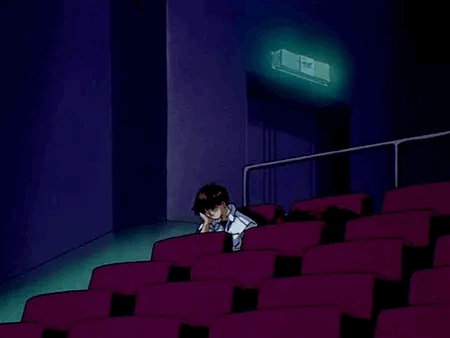
I know the feeling and to make sure you don’t get caught out again, this list of films not only covers your filmmaker wannabe basics, but also a few swarve anomalies that you can throw into the discussion like a true culture vulture.
Pulp Fiction (1994)

I shouldn’t be saying this but if you haven’t seen Pulp Fiction and you made it to film school, just leave. Hand in your student ID at reception and walk out the door, watch Pulp Fiction and come back to the next day. If you haven’t seen the 90s cult classic directed by Quentin Tarantino, it’s likely you’ve had at least one person disgusted by your lack of engagement for the film. But why is it such a necessity amongst the filmmakers of today? Well after a highly successful debut of Reservoir Dogs at Cannes Films Festival in 1992, Tarantino created another world of filmmaking. What he brought to the industry was a perspective and whole landscape that had never been seen before and the release of Pulp Fiction in 1994, certainly proved that Tarantino wasn’t a one trick pony. With a stellar cast, most of which were in their early days, and an outstanding storyline, Pulp Fiction is any filmmaker's paradise. And seriously, you can’t keep avoiding it.
Fight Club (1999)

Keeping it in the 90s, is David Fincher’s Fight Club, another revolutionary film from the king of psychological thrillers. If the name David Fincher doesn’t mean anything to you, it probably should, seeing as his films have grossed over $2.1 billion at the box office globally and earnt him 30 Academy Award nominations. Story, script and cast align perfectly in all of Fincher’s films, with Fight Club being no exception. Based on the 1996 novel by Chuck Palahnuik, Fight Club follows two men (Brad Pitt and Edward Norton, enough said) who initiate in an organised fight club. Sounds pretty straight forward until you get to the end and realise Fincher has been messing with all of us the entire time. In terms of early filmmaking and story structure, Fight Club is an excellent cult classic to sink your teeth into.
Psycho (1960)

Another name to be aware of, Alfred Hitchcock laid down the foundation for thrillers for generations to come. For it’s time, Psycho was revolutionary as it broke the strict censorship and threat barriers created in the world of filmmaking in the 60s. There are some iconic scenes in Psycho, along with an unnerving score and a whopping $39.2 million profit in the box office. Hitchcock also took a gamble killing off the star of the film, Janet Leigh, 45 minutes into the film. However, Psycho just goes to show that risks can also pay off.
La Haine (1995) “The Hate”
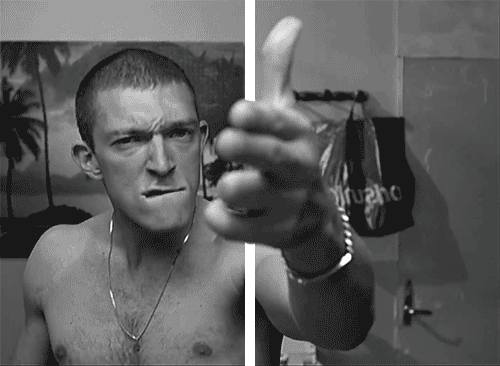
There’s a reason why some of the most revolutionary films can be found in the 90s. The 90s was the year of filmmaking that gave two fingers to the world and most of its stories belonged to the misfits and outcasts of society. Films were violent, punchy and led by young protagonists, raking in teenage audiences and voices. La Haine is a prime and clear cut example of the injustice between races and class in Paris, winning a Best Director award at Cannes in 1995. The film was so thought provoking and hard hitting, that the Prime Minister of France at the time forced his cabinet ministers to watch it. I’m sorry, if La Haine is good enough for the Prime Minister of France, it’s good enough for anyone.
Any Bong Joon Ho Film

With the success of Parasite still looming over Hollywood, Bong Joon Ho has to be the industry’s biggest underdog. Before the 2020 Oscars, most weren’t even aware of the director’s work or how gratifying he is as a storyteller. Each film is meticulously executed, with a hard hitting political message sewn beneath the surface of the overall film. Bong Joon Ho was quoted saying that this technique isn’t intentional and the breadth of the films he makes is found once they’re completed. From Okja that explores animal cruelty to Snowpiercer which explores class division, Bong Joon Ho has a way with imbedding societal issues into his films in a stylstic and structured way that should have any filmmaker filled with envy. He’s a strong voice for Asian cinema who’s had a sharp impact on western cinema without feeling the need to have all his films in the english language.
The 400 Blows (1960) “Les Quatre Cents Coups”

Whether you’re at school, in a lecture or amongst friends GUARANTEED the 400 Blows is going to worm its way into conversation at some point. The film was part of The French New Wave movement of the last 50s that created the foundation for French Cinema for films to come. The French New Wave was a significant movement that sought out to reject traditional ways of filmmaking and introduced new, more experimental ways of telling stories on screen. Francois Truffat won Best Director at the 1959 Cannes Film Festival for his directorial debut about a young boy struggling through Paris between his teachers at school and parents at home. The film shone a light on the misunderstood youth of the late 50s and early 60s, setting off a whole co-ord of films within the same genre later on.
Moonlight (2016)
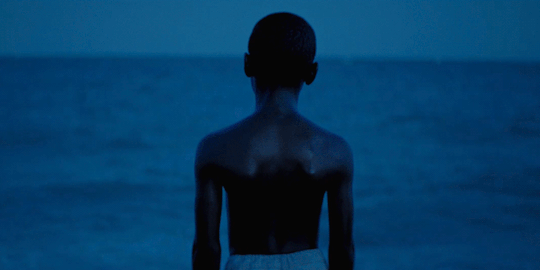
Barry Jenkins became the underdog of 2017, with his beautiful and captivating story Moonlight, following a young boy through early adolescence and adulthood. The film is impeccably shot with rich colours and seamless shots. Moonlight won big time at the 2017 Academy Awards, winning Best Picture, Best Supporting Actor and Best Original Screenplay. The film certainly set the world of filmmaking on fire and carved out space for more black filmmakers to enter into the industry.
Hereditary (2018)

It’s easy to forget that this film was released 2 years ago as it has had some groundbreaking reception since then. Hereditary, directed by Ari Aster, sets a bar and tone within horror films that has never been touched on before. Before him, your average horrors came from low budget gimmicky films where the lead actress would be running around in her underwear by the end of the film. Hereditary keeps everyone in their clothes (for the most part) and viewers on the edge of their seats for the entirety of the film. What stands at the forefront of this film is the slow pace and artistically beautiful frames that Ari Aster has meticulously curated to create a work of art. It’s everything you wanted in a horror film but could never really ask for, due to the over saturation of the horror films on the market and predictable jump scares that come with them. I found that the jump scares in Hereditary were put in the most unpredictable places, leaving me and most people visibly shaken and disturbed.
The Grand Budapest Hotel (2014)

Probably the first PG film on this list, Wes Anderson’s most iconic film The Grand Budapest Hotel, is a production designer’s paradise. Not only that, it features an insanely good cast with the likes of Jeff Goldblum, Ralph Fiennes, Bill Murray, Saoirse Ronan, Adrien Brody, Tilda Swinton, Willem Dafoe, Harvey Keitel, Jude Law and Edward Norton starring in the film. Wes Anderson’s mind is like a fairy tale book; he has the ability to create other worlds filled with bright colours and characters that EVERY ACTOR are dying to be. The Grand Budapest is probably Anderson’s most ambitious film to date and features some production design techniques that are beyond real.
Amélie (2001)

Amélie is your basic starter pack in French Cinema. Seeing as every charity shop has at least one copy of Amélie for sale, you have zero excuse for not having seen it yet. Even if French Cinema isn’t your thing, it’s very likely the entirety of French Cinema will be a topic of interest within your filmmaking course and Amélie is a fine place to start. The film ties the story, soundtrack and visuals perfectly and for any indie filmmaker, it’s a good example of taking a simple story but executing it in a complex way. In terms of box office, Amélie scored pretty well, with a humble budget of $10 million and making over $173 million globally. It was also nominated for five Academy Awards in 2002 and remains as one of the best and most iconic films to come out of France.
Good Time (2017)
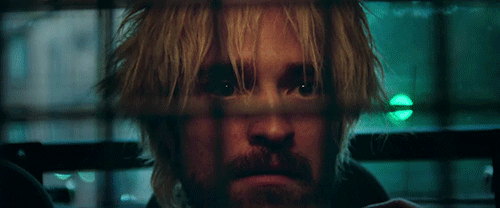
With a humble budget of $2 million, Good Time made double in the box office and had a Hollywood star at its forefront. In fact Good Time skyrocketed Robert Pattinson’s career and since it’s release, Pattinson has gone on to be part of some amazing projects. Seeing Pattinson in such a gritty role in Good Time, was highly refreshing and totally suited him in every way. New York based filmmakers, Josh and Benny Safdie co directed and wrote the crime thriller after having an impressive response from their previous film, Heaven Knows What. They recently completed Uncut Gems for Netflix starring Adam Sandler, which continued the crime thriller neon lights aesthetic that's come with their two previous films. Good Time is jaw droppingly good, and for those wanting to go into lighting, it is a must watch. The deeper the story goes, the more you feel the urge to gasp as Robert Pattinson feeds us with an unrecognisable performance.
8 ½ (1963)
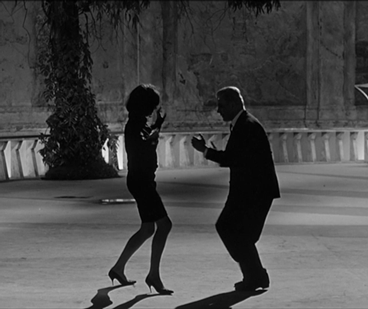
We are getting into sophisticated territory here with Fredrico Fellini’s 8 ½ . For those Scorsese and Tarantino fans out there, Fellini is your filmmaking bread and butter as both filmmakers have admitted to being heavily inspired by the Italian’s cinematic masterpieces. Fellini had the ability to tie reality with fantasy in a personal way, depicting a lot of his own life within his films. 8 ½ is no expectation, as it details the making of the actual film in the film and the rocky relationship he had with his wife, who starred in a few of his films. Fellini is named as one of the best filmmakers of all time, for his experimental style and off the wall filmmaking techniques. No one can or could do what Fellini did and there’s yet to be anyone who measures up to him.
Get Out (2017)

You like Get Out, I like Get Out, we ALL like Get Out. The film was the first of its kind in many ways and resonated with an audience that hadn’t yet been found. Jordan Peele wrote and directed the film, which grossed 100 times more than the film’s budget at the box office. This film is the epitome of less is more, taking a somewhat simple idea and heightening the possibilities of it. Jordan Peele became world renowned for it, along with British actor Daniel Kaluuya for his performance that earned him a Best Actor nomination at the 2018 Academy Awards. Get Out stands as a film that did what no one else has done before and for that, it deserves all the praise it gets.
All Celine Sciamma films
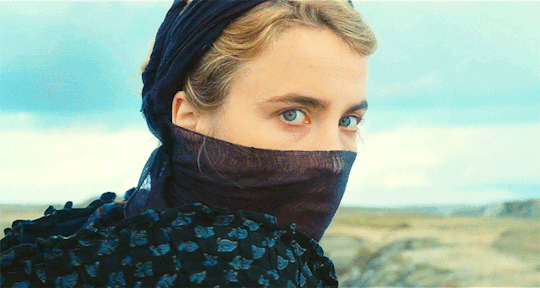
It’s likely the first time you heard of French filmmaker Celine Sciamma was from her groundbreaking, break through film Portrait of a Lady on Fire. Premiering at Cannes 2019, the film earned the Queer Palm d’Or and Best Screenplay Award. The film is simple, gorgeously shot and significantly deep in its telling. Not only will Portrait of a Lady on fire set you on fire, but all of Sciamma’s films sit on a level of filmmaking that is praise worthy. Her past films, Waterlilies and Girlhood explore coming of age stories amongst women and are executed in a highly personal and understanding way. She is the queen of female indie filmmakers and certainly one of the best french filmmakers in the industry to date.
I, Daniel Blake (2016)

It can be hard to remove the gimmicks and big names from the stories being sold on screen and get straight to the heart of a film. Ken Loach has brought an incomparable style of filmmaking to the table that sets him apart from almost every filmmaker out there. It's easy to compare a Tarantino film to a David Fincher one, however, throw Ken Loach into the mix there's just about zero relation to either filmmaker or their styles. I, Daniel Blake won Outstanding British Film of the Year in 2017 BAFTAs and the Palm d’Or at the 2016 Cannes Film Festival. It’s no wonder why the Cannes Film Festival ate this film up seeing as the realism and grittiness of I, Daniel Blake gave a voice to a large part of society that is heavily ignored. This film leaves you nodding in agreement at the reality of the way things are even if that reality is incredibly hard to bear.
The Meyerowitz Stories (2017)

For those budding screenwriters out there, the work of Noah Baumbach is necessary in understanding three dimensional characters and the dialogue that comes with them. The Meyerowitz Stories stands from Baumbach’s other films, seeing as the screenplay and actual film are completely the same. On reading the screenplay of this film, I found not one single word of dialogue was forgotten about or changed, which is a pretty incredible achievement for any filmmaker. It certainly showed the actors (Dustin Hoffman, Ben Stiller, Adam Sandler, Emma Thompson, Adam Driver) had a lot of respect for the words on the page and each one of their performances sought to lift them off it. Baumbach’s writing style is beautifully accurate to real speech; there’s interruptions, over layered conversations and a great deal of tangents. The dialogue is like music and is only elevated by the well rounded cast.
The Master (2012)

Filmmaker Paul Thomas Anderson has this hypnotic way of arresting his audiences to invest in his films for two and a half hours, then drop them at the last second. You don’t know why you’re watching or feel so absorbed in the worlds he creates, however it’s as if something over takes your attention, forcing you to carry on watching till the end. The Master is no different with a prolific cast and slow burnt pace to it. It's hard to explain what it is about this film that makes it so great. The cast made up of Phillip Seymour Hoffman, Joaquin Phoenix, Amy Adams and Jesse Plemons bring a top level performance and it feels like they’re always sitting on a secret. Every moment, every word, every shot is unmissable and the entirety of the film sets a bar of filmmaking that is flawless. Paul Thomas Anderson is a master (pardon the pun) of arresting his audiences and is someone to follow if you wish to do the same with your own films. For budding cinematographers, all of PTA’s films are worth a watch.
12 years a slave (2013)

Probably the best film out there that depicts slavery, 12 years a slave is a heart wrenching and moving film directed by Steve McQueen. The sensitivity and authenticity Steve McQueen brings to his films is A class, as he does an outstanding job of really transporting his audiences to a time before. There are many scenes in 12 years a slave that can be considered some of the best ever made. The cast is in-sane with the likes of Chiwetel Ejiofor, Lupita Nyong’o, Benedict Cumberbatch, Michael Fassbender, Paul Dano, Sarah Paulson, Brad Pitt and even a young Storm Reid and Kelvin Harrison Junior, all joined within this story. Films with such casts are rare and it’s unquestionable why the film was nominated for Nine Academy Awards, winning three back in 2014.
The Social Network (2010)

Even though I wasn’t a fan of The Social Network, I can still appreciate the musicality behind the work of Aaron Sorkin and the screenplay he wrote for this. The collaboration between David Fincher and Aaron Sorkin on this film is something the world certainly needed, as two highly skilled masters of film came together and served us a huge slice of their talent. The Social Network is 100% the screenwriter’s film, and one to watch when trying to analyse successful dialogue within films.
Babel (2006)

Those who are into the episodic film, you are advised to look into the work of Alejandro G. Iñárritu. A name you might not be too familiar with, but you only need to have seen Birdman or The Revenant to appreciate his talents as a director and unique voice. Babel struck me as a poignant and INCREDIBLY structured film, with a satisfying 360 to it, as all the stories connect to one another in a distinct way. It’s so clear that a lot of time was put into writing such a screenplay and the production itself is to be noted, for scenes are filmed in Morocco, Tokyo, California and Mexico. That takes a LOT of money, time, effort and people, however if was certainly worth it as Babel is hands down one of the best films you’ll ever see.
The films of Xavier Dolan.

Xavier Dolan is Cannes Film Festival’s godson. The man has attended every festival for the past 10 years and each time, when in competition, he brings a personal and hard hitting perspective within his films. I have seen all but one of these films, and I suggest you do too. Xavier Dolan’s directorial debut I Hate My Mother scooped him numerous awards at the Cannes Film Festival and was made when Dolan was only 20. From then, he went on to direct several french/canadian films that won him the Jury Prize, Un Certain Regard and Queer Palm at Cannes. He’s a filmmaker who puts so much passion and devotion into his work, which is seen through the incredible acting, story and dialogue shown within his films. Two must see films of his would be Mommy and Laurence Anyways, especially for the acting. Xavier Dolan also directed the music video for Adele’s Hello music video which is one of the most watched music videos of all time, with 2.7 Billion views on YouTube.
You Were Never Really Here (2017)

Lynne Ramsay’s 2017 film starring Joaquin Phoenix is everything and more that you want from a thriller. It’s probably one of the best thrillers out there on the market and is highly underrated. Lynne Ramsay’s previous spellbinding feature We Need To Talk About Kevin sent pulses racing through the industry, giving Ramsay the recognition she deserves and even earning her a Palm d’Or nomination at the 2011 Cannes Film Festival. As a female filmmaker, Lynne Ramsay is one to watch for she has a knack at creating her own original slow burning, deep stories and directing them in a seamless way.
The films of Christopher Nolan

Christopher Nolan’s 11th film recently hit cinemas and no one knows what the hell is going on in it. However, there are plenty of other Christopher Nolan films that don’t melt your brain or send the guy next to you at the cinema cursing throughout the film in frustration at not understanding the film. The Dark Knight is said to have one the best performances in cinema history, with the late Heath Ledger taking on the role of the Joker. Not only that, but the likes of Gary Oldman, Michael Caine, Anne Hathaway and Christian Bale are also featured alongside Ledger, creating an untouchable cast. Dunkirk also deserves an honourable mention as one of Nolan’s films, seeing as I couldn’t breathe throughout the entire film. The second Dunkirk begins, the tension builds and you’re kept in a constant state of panic for the characters on screen. As far as war films go, Dunkirk is up there and it’s cinematic qualities were recognised at the 2018 Academy Awards, picking up three awards. What we can take from Christopher Nolan and his ability to execute stories on screen is that he spends a great deal on his screenplays before production. Tenet took FIVE YEARS to write (and probably another five to understand) certainly showing his devotion and dedication to his ideas as a filmmaker.
Honorouble mentions (that u should definitely check out)
Taxi Driver (1976)
A Clockwork Orange (1971)
Call me by your name (2017)
Her. (2017)
Do the right thing (1989)
Obviously there are 100s of other films worth watching that aren’t on this list, however if you were to watch all films mentioned on this list, you’d certainly get a different perspective on the possibilities of filmmaking and the stories they tell.
#movies#pulp fiction#fight club#psycho#david fincher#quentin tarantino#alfred hitchcock#la haine#bong joon ho#snowpiercer#okja#french new wave#the 400 blows#moonlight#barry jenkins#hereditary#the grand budapest hotel#wes anderson#amelie#french cinema#good time#robert pattinson#get out movie#jordan peele#celine sciamma#portrait of a lady on fire#waterlilies#i daniel blake#ken loach#the meyerowitz stories
111 notes
·
View notes
Link
- full speech :
I’m here to give the award for Best Original Screenplay to the Safdie brothers and Ronnie Bronstein. It was challenging for me to write these remarks, not only because of the incredible and intimidating talent in this room tonight, but because what the Safdies do for me as filmmakers is so revolutionary, it’s hard to limit the remarks to just the screenplay. Also, because I’m a dumb 24-year-old actor, I’ve never written anything. I stand on a mark, I say what people tell me to say.
I don’t know what insight I have about screenwriting, but here’s my go. Trying to describe their approach to writing, it’s to know exactly what they want in a pre-production process going into filming, and then on the day, finding those jewels and gems in the rough of collaboration and the day to day adrenaline of filmmaking. A frenetic stylistic approach to filmmaking that can be interpreted as improvisational and unplanned, but make no mistake, with the Safdies and with Ronnie, it’s not. This task is made easier when the actors you’re working with are of the caliber of Adam Sandler, Lakeith Stanfield, and Keith Richard Williams. That’s not Keith Richards, that’s Keith Richard Williams. If you’ve never heard of him, that’s because the Safdies literally found him on the street in New York and cast him, like half of the characters in their movies, which sucks for actors like myself with résumés.
Their 2017 film Good Time was a straight shot about a bank robbery gone wrong, and a deranged young man’s relentless and untiring attempt to free his brother from custody. The movie follows Robert Pattinson’s descent into moral-less madness. If Good Time was a shot of tequila, then Uncut Gems plays like cocaine and mushrooms with a little sprinkle of Alka-Seltzer on top. Adam Sandler gives a truly awe-inspiring performance. It’s like Adam Sandler watched Punch-Drunk Love and was like ‘I’m going to do exactly that again, except the exact opposite.’ And Josh and Benny and Ronnie created a tornado of stress, swag, fucked-up intrigue and unapologetic, raw, truthful filmmaking. These are movies people my age can actually not get bored as fuck watching.
Let me end on this anecdote, and I apologize for personalizing it. About a month ago I texted the guy I look up the most to in the business, inviting him to a premiere. He said he couldn’t come, but he invited me to a dinner with Martin Scorsese that would be happening 30 minutes later that night. I was literally on the toilet when I got that text. So I did Google Maps check, I was uptown within 30 minutes. I hope not to embarrass you if you’re here tonight, but at the dinner I was shocked by Mr. Scorsese’s self-depreciation, his razor sharp wit, and his good humor. I was the young guy at the table but I was having trouble keeping up with the pace of conversation and the sophistication of movies being referenced.
I made a joke about how if The Irishman was successful, I’d never work again, because from now on I’d be auditioning against James Dean, Marlon Brando, and Charlie Chaplin. He very calmly and humbly said it was now time for a new generation of filmmakers to take over. He pointed out, for example, the Safdie brothers. I didn’t know in that moment, but he actually executive produced Uncut Gems. The comparisons are obvious: They’re both truly New York filmmakers in their blood, they both explore the psyche of devilish and morally ambiguous protagonists. In many ways, Adam Sandler Howard Ratner parallels Ray Liotta’s strung out Henry Hill in Goodfellas. This is high praise. I know it. Who am I to dole it out? And yet this is no longer the golden age of cinema. It’s no one’s fault — except maybe Ronald Reagan, no just kidding.
It seems every expression of art has its great moment in time. And yet this is why we need the Safdie brothers right now. This is why we need Barry Jenkins, and Greta Gerwig, and Mati Diop, and Ari Aster, Lulu Wang — not to reignite the golden age party that is definitively over. The world is on fire as we speak. [We need them] to make the art that is truthful to the times and a true mirror of our times. And, in the Safdies’ case, really unapologetic too. Maybe it won’t be as big of a party, but it will be unique as fuck.
223 notes
·
View notes
Text
THE BEST FREE CONSOLE AND PC GAMES TO CLAIM IN MAY 2021
We all love video games, but sometimes they are too expensive to buy. But there have been times game studios and other services offer a free of handful titles over a period of a month. So, don’t miss out. Here are things you can download in May and enjoy.

We have already talked about this that we all love games, but if it is free, we will take it any day. Some places offer a good collection of that but for a limited time offer. Epic games add a few games for free in weeks. Amazon’s Prime Gaming provides you with a subscription and has a new title each month.
Now the hard part if you don’t pay attention, you will lose on these games.
For people to not lose on these games and know where to claim the games. We are here to help you with the best games and track them and when they are available for free in which month. Some titles you can grab for free without anything, and some require a subscription. Here’s everything you can grab this month.
Pine
This game is set in a world where you humans have to go toe to toe with evolved anthropomorphic animals; this is an indie-style game where you can travel to different lands and solve different puzzles and find and fight enemies and trade items. The world in the game is constantly changing. The NPCs and the villages are constantly changing and reacting to players and their actions.
Sludge Life (Until May 28)
This is the third-person 3D platform with the graphics of CRT graphics. This is a short and simple game allowing you to experience the game and explore the surreal world. Now meet a cast of crass characters and can visit the tag area with graffiti. Devolver Digital has made the game free for everyone for the next year.
Rocket league (Free Now)
It is a competitive sports game that combines high-speed racing gaming. This is a competitive game where you get to play soccer with race cars. During the last fall, the game moved exclusively to the Epic game stores, and you know it. It became free to play for anyone who wants to play this game. This game also won the Editors choice awards because it was so fun to play and a different concept. This is one of the best PC games out there, and you can get it for free.
Best free GOG games:
GOG doesn’t always provide you with free regular giveaways like some of the other websites too. There are few collections of free games which are classic and the best computer games out there. The games like Shadow Warrior and Postal: Classic and uncut. These are the games you have to pay for on steam, but here they are free. There are other classics like Ultima 4 and Akalabeth: World of Doom 1979 that are not available anywhere else. Here is a list of some games that you might find here but not anywhere else.
Akalabeth: World of Doom (1979)
Beneath a Steel Sky (1994)
Ascendant (2014)
Bio Menace (1993)
Delores: A Thimbleweed Park Mini-Adventure (2020)
Doomdark’s Revenge (1984)
Cayne (2017)
Eschalon: Book I (2006)
Flight of the Amazon Queen (1995)
The Lords of Midnight (2013)
Jill of the Jungle: The Complete Trilogy (1991)
The lure of the Temptress (1992)
Postal: Classic and Uncut (2003)
Tonight, we Riot
This is a game about the revolutionaries. You have to take control of them, and then you help them riot. This is a game about where you take control and then make an effort to overthrow their oppressors. You can claim the game on the GOG for free.
Children of the Morta (While the supplies last)
This giveaway is a little different from others because you have to make a purchase to get a free game out of it. Here GOG and Visa have combined forces where they are giving away 53000 codes for the action of RPG Children of Morta. You can get the game by signing on the giveaway page and making a payment of 25$ payment using a Visa Card.
The Witcher: Enhanced Edition
GOG allows you to score a copy of the first Witcher game for free and if you have a GOG Galaxy desktop client. In the recent view and click the giveaway button, and you can see that at the top of the screen. As long as you agree to the terms and conditions, you can get the best game in the market for free without any fuss.
Conclusion:
So here we are writing this for all the lovers of the game. The games that you can get for free without spending any money. Hope you find this useful. Thank you for the read.
Source: THE BEST FREE CONSOLE AND PC GAMES TO CLAIM IN MAY 2021
1 note
·
View note
Link

LaKeith Stanfield Settles Into His Toughest Role Yet: Himself
As he heads towards his thirties, the electrifying actor is laying himself bare — and finding a new sense of balance
by Tirhakah Love Feb 12
For nearly a decade, LaKeith Stanfield has used his screen time reveling in the bizarreness of America’s racial consciousness. Whether Atlanta’s quippy street mystic Darius, or the code-switching sardonics of Cassius in Sorry to Bother You, his characters have always seemed to be in on the joke — and in his latest, Judas and the Black Messiah, Stanfield is closer to the secret than ever before.
Shaka King’s film, which chronicles the final days of Black Panther Party Chairman Fred Hampton (Daniel Kaluuya) through the sullen eyes of FBI informant William O’Neal (Stanfield), finds the actor in his darkest, most nuanced rendition of the Black saboteur to date. “It was one of the hardest things I’ve ever had to do,” the 29-year-old said over a Zoom call last week, “I just really wanted to make sure I was getting it right. But then also not getting it too right, if that makes sense.”
Stanfield has built a name on playing conflicted characters, but a figure with as much baggage as O’Neal — who was forced into his own role while still a teenager — demanded what he calls a “necessary nuance,” one that became, at times, overwhelming. The film set became not just a vision of radical Black politics, but a space for Stanfield to process his own upbringing in order to be a more “realized, holistic” person. LEVEL spoke with the actor about how playing O’Neal helped illuminate his path toward a healthier decade that included both therapy and meditation, heading into his thirties.
LEVEL: Judas and the Black Messiah was supposed to drop in August, but 2020 had other plans. How does it feel to know it’s coming out?
LaKeith Stanfield: I’m excited. I want people to learn about Chairman Fred Hampton’s story. It’s something that’s not spoken about enough. Everything has been such a question mark with this pandemic — not knowing how it was going to come out, or whether it would come out, period. So here we are with Black History Month, this story of Chairman Fred Hampton, and everybody gets to experience this in the most honest way we could put it in. I’m really happy. I’m going to host a screening at my house and just invite everybody… who’s been tested. [Laughs]
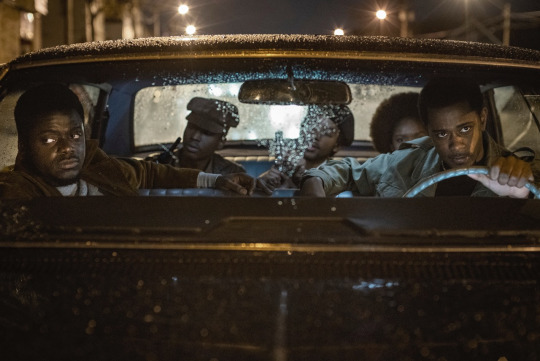
By my count, this is the second role that Daniel swiped from under your nose. Didn’t he get you for Get Out, too?
That’s right. You know what, for Get Out I auditioned for like every role. I came in and I read with Jordan Peele. And then I read for another — I think it was Rel’s role — and ended up eventually reading for my role. Damn, I forgot all about that.
How can we keep being friends with a dude who just steals roles from you, bro?
Nah, it’s all good. [Laughs] Ultimately, those decisions are made by people who have a better understanding about casting and their relation to the story than I do. If they’d asked me to play a hat in this movie, I would’ve done it.
It doesn’t seem like a Hollywood thing to do at all.
Hollywood is not always behind things like this. It took years to get it to the point where we could actually make it. These are stories people are yearning for. We have to always prove that time and time again, unfortunately, but it is what it is. We show and prove these kinds of stories are human stories. They’re specific to the Black experience, but it’s global. We hope that we can get these studios to understand that more and more.
How did you relate to [William O’Neal’s] isolation and paranoia he lived with? How did you tap into that?
I didn’t see him as someone I could connect to, so we started to design the character from the inside out. The thing is, we don’t have any information about O’Neal outside of his Eyes on the Prize interview, a couple of court transcripts, and other eyewitness accounts. We could create him from scratch and give him different dimensions. I wanted to introduce how he might be a thrill-seeker. He might get fun out of creating imbalance. He steals cars — he wasn’t very afraid to put himself in a line of fire — but he was also a person who eventually felt guilty about what he did. In the full-length version of his Eyes on the Prize interview, he says at one point, “I felt bad about the things I did, but I had to continue to play the role.” He contradicts that later by saying, “I’ll let history speak for me.” Clearly this guy has an internal struggle that we missed.
Wearing all these different masks.
In the scene where I had to poison him, a lot of it didn’t end up making it to the final cut, but we shot [me mixing it in] Kool-Aid, and I had to go through all those motions. With somebody like Daniel, who I just respect as a human and an artist, as Fred Hampton, it felt like I was actually poisoning Chairman Fred Hampton. One thing [co-star] Dominique Fishback mentioned to me is that your body doesn’t always differentiate the experience from your imagination. So sometimes your body thinks that’s real, everything you’re putting it through. It’s no wonder I’ve been feeling so stressed out and having panic attacks. I realized going forward before I step into something like that again, maybe have a therapist. [Laughs]
“There’s a dynamic between celebrity and the common man that Covid-19 has really lifted the veil on. We all gotta wear our masks or we suffer the same fate. You’re not special.”
For Black people playing an op it’s different. There’s real pressure. Especially for a character who’s never been portrayed.
That’s how I felt when I first figured out I found out who he was. But you don’t go into something like this not knowing that’s going to be the case. I hope I was able to portray him in a way that made people see themselves in the character. What decisions would you have made? Were you trying to go to jail for five to 10 years? Would you try to stay out? What does that mean? Those are the more important questions. Let’s say there’s a million people in the world: two of them are Fred Hamptons; the rest are William O’Neal. I want to challenge people to think about the ways they might be O’Neal-esque. And maybe through seeing this, you might distance yourself from some of those things.
If the pandemic has revealed anything, it’s the disconnect between the celebrity class and everyone else. People like Hampton and [Bobby] Seale are trying to do cultural work. We’re seeing that there’s disconnects here. How does a film like this impact your view of celebrity?
These roles are metaphors for so many things. Chairman Fred Hampton as a metaphor for socialism, selflessness, and O’Neal could be argued to be a metaphor for capitalism and selfishness, or perceived celebrity ego. There’s a dynamic between celebrity and the common man that exists, which Covid-19 has really lifted the veil on to a significant degree because we all sit in here on Zoom, right? [Laughs] We all gotta wear our masks or we suffer the same fate. You’re not special. This made everybody have to sit down and confront that idea.
[Laughs] Right.
One could argue that the fact that Fred Hampton died at a young age is justification as to why you shouldn’t try and put things outside yourself for the greater good, because it ends up being helpless and hopeless. I don’t agree with that. I think that Chairman Fred Hampton’s legacy lives on, like he said, “you can kill a revolutionary, but you can’t kill a revolution.” I remember being in that scene where Daniel was giving a speech, and I’m thinking, the things that Chairman Fred did all those years ago, today we are here experiencing this moment collectively because of him. While I’m doing this, I’m looking into the audience, seeing Afros, seeing Black people, seeing the beauty and the confidence and love, I don’t really even see that these days. So he zapped me back into a time where this is what people were on. We gotta find that in ourselves again and unlock it
You have a great way of playing chaos agents. Whether it’s a muted performance in Atlanta or muted in a different way in Uncut Gems, where your character was always on the fucking edge. Why do those roles as subversive figures speak to you?
I haven’t really thought about it but I know one thing’s for sure: I tend to lean toward characters who have internal dialogue or struggle. I like trying to find some groundedness and truth in the in-between of two extremes. These characters appeal to me on a subconscious level because that’s how I am. I like taking things to crazy extremes and then trying to find some kind of balance in that. I’m also attracted to characters being able to show the mirror to you and have you see something that activates something in you. Those characters that have you see yourself through absurdity.
You mentioned earlier how young these dudes were. Fred Hampton was 21 years old when he was killed. If he made 24, 25, I’m wondering how much more he could have gotten done. Being Black, we make it to 25, it’s a thing. You’re now about to make it to 30. How’s it hitting you? Do you think about age at all like that?
Not really. Not really, but to some extent, this is a landmark moment for me. I feel like I’m just starting to really get my shit together, like personally. And be the better version of myself for myself. I just started therapy just this year.
Yo, congrats.
Thanks man. Going into my thirties, I plan to continue to do it. It’s been helpful for me to unpack a lot of stuff. I’ve been through a lot of stuff, there’s a lot of things I just didn’t confront. Those things mount; you act out in different ways and they can become harmful to you. So I just said this year, I’m going to make the choice to try and be better. Like I was always throwing off therapy. I never wanted to try it. I was like, whatever. It was just something that’s bad in my family. Growing up, everyone’s like, “therapy, what the fuck are talking about?”
So I wanna continue working on that — working on myself and finding a better sense of balance, and by virtue of doing that, unlock more potential in my heart. And I’ll be able to express in a more realized, whole holistic way. Those are my ambitions moving forward.
There’s always a moment where you just know that you need it. That, there are strategies you just don’t have that you need to build to be a person. Was there a moment for you where it’s like, fuck I really gotta go to therapy. I really gotta get some help?
I wake up every day and I have the same thought: Fuck, I gotta go to therapy.
[Laughter]
I was kind of raised like a wolf. I didn’t have parents or people who were guiding me or told me anything. So I had to figure out everything on my own — try on masks and faces and hats and wigs — and try to figure out what my place is in the world. For a long time, I didn’t realize I was stunted because of that. Not having that at home, and at an early age being traumatized by things I was seeing. Just now, I’m starting to really find the tools to help me pull that young self out of that abyss. It took me a while to even realize there was a problem because I was like, “Oh, you guys are crazy. I’m not crazy.”
Were you shopping for therapists during the pandemic?
It’s all on Zoom now. I’ve found this really cool therapist. It’s great and perfect for me right now. Hopefully it continues to be the case. It’s helped me a lot. After doing press yesterday, I had another session and it was amazing. It helps you unlock things about yourself. It’s not even necessarily about the person that you’re doing therapy with, but like you said, perspectives and strategies and tools that you didn’t have access to before.
Especially in the work you do, it’s important to extricate yourself — that period of like, okay, I gotta get out of this. How have you come back to yourself in this period of time?
It’s been meditation. The one good thing about this pandemic is being able to sit at home by yourself and deal with yourself and just your inner voice. And even though that’s annoying as hell, beautiful clarity comes out of it. People would be surprised how many answers they can give themselves just by listening to themselves and not distracting yourself with so many things like social media or movies and stuff. Now, it isn’t easy, especially once you become hooked into a pattern, but it’s really worth it.
That’s been beautiful for me just to take those moments. It’s important and it’s taught me a lot about myself. And that’s kinda what pushes you. Now that you understand and recognize some of the issues that you want to make better about yourself, you can plan on ways to do that. Whether it means therapy or yoga, which I also started doing.
There’s a scene in the film that feels like the Last Supper, and it’s just gut-wrenching. That sense of dread is so hard to tap into, but it also feels of a piece with what so many of us have been going through — knowing that people are losing their lives, either from our government or from a virus, and living with that same dread.
It’s a real thing. I went to the hospital recently on some health stuff. When I was in there, there were a bunch of Covid-19 patients being moved about. Being in a hospital is pretty scary right now. People screaming and literally dying around you. There’s an overall energy. Like this feeling of loss permeating in the world today.
Before we started this movie, my best friend who I grew up with got killed by his brother. So I was carrying that with me the whole time. One thing that made those moments real for me is that I know what it feels like to lose somebody abruptly, violently. When we filmed me having to poison Fred Hampton, it was a really tough day — I was thinking about my own brother, just in a whole different place all day. On set crying. That sense of loss, knowing the violence of all of that, really informed everything for me. There was no distinction between reality and what I was experiencing in the moment. Most of the takes in that scene, I was actually bawling. I had to tone it back.
The worlds are just overlapping with one another. That’s fucking wild.
I hope having gone through all that, somebody watching it can be moved or touched. Maybe it helps put emphasis on Fred Hampton and why it’s so valuable to protect people like him.
As someone who lost someone close recently, some days it feels like your worlds are collapsing on one another. I just lost my dad this past summer. It’s weird to even talk about, but the fact that you have to just carry on, with your friend’s death sitting in the back of your head is…wild.
With movies, you never know if we’re doing the right take, or even if it’s ever going to be seen by anyone. Especially with something like this, you never really know. I’m so grateful for everybody putting their best foot forward. I want everybody to see it. I really want Black people to see it, especially Black kids in Chicago. I want them to see someone who really put things outside of themselves and put something first and gave in love. I just hope that somebody sees it and it touches them. It makes them think about something a little differently. That’d be dope.
This interview has been edited and condensed for clarity.
#black history#black men#black panther party#black panthers#black people#bobby seale#chicago#daniel kaluuya#fbi#film#fred hampton#interview#lakeith stanfield#shaka king#usa
5 notes
·
View notes